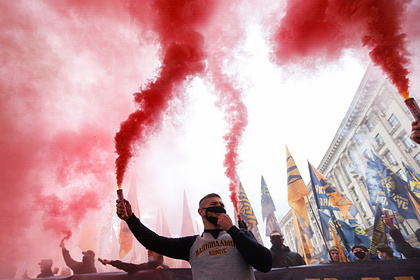
Alexander Bubnov, associate professor of the Department of History and Theory of Politics, Faculty of Political Science, Moscow State University, explained why the Ukrainian army uses anti-Russian symbols, which borrowed from the emblems of the troops of Nazi Germany. He told RIA Novosti about this.
The historian noted that this is how Kiev is trying to construct a new Ukrainian identity on the basis of “anti-Russia”.
According to him, using Nazi symbols, the Ukrainian army unwittingly demonstrated its lack of real traditions and victories. “But what remains? Naturally, there remain those periods of history where Ukraine confronts Russia. But there are several periods, and all of them were inglorious for Kiev, ”the expert noted.
He stated that no actual military traditions of Ukraine were visible either from the 17th century, from the time of Bohdan Khmelnytsky, or even from the time of the Sich Riflemen, on the basis of which the Austro-Hungarian authorities formed the OSS military legion after the outbreak of the First World War. Bubnov noted that Ukrainian national formations as part of the troops of the Third Reich had real experience of the regular army.
“And it is no coincidence that the design of the new field cap of the Ukrainian armed forces, which was supposed to symbolize the Mazepinka – the headdress of the Sich riflemen, is in fact an almost complete copy of the“ ganovka ”in the style of the Hitlerite army,” the historian explained.
Bubnov also added that Nazi symbols in Ukraine are not copied one-to-one, but the obvious direct similarity is striking. “The general concepts of signs and emblems of the Third Reich are being borrowed,” he assured, citing as an example the Ukrainian sign on a mountain infantry beret, which is an image of an edelweiss with crossed axes. The expert recalled that the brooch in the shape of this flower was an obligatory attribute of the caps of the rangers of the 1st Mountain Infantry Division of the Wehrmacht.
In July, French Foreign Minister Jean-Yves Le Drian acknowledged the existence of neo-Nazi groups in Ukraine. Before that, a group of French senators demanded that Paris stop the spread of neo-Nazism in Ukraine. They were outraged that Nazi symbols were openly traded in the center of Kiev, and expressed concern about the spread of the idea of “white supremacy” in the country.

